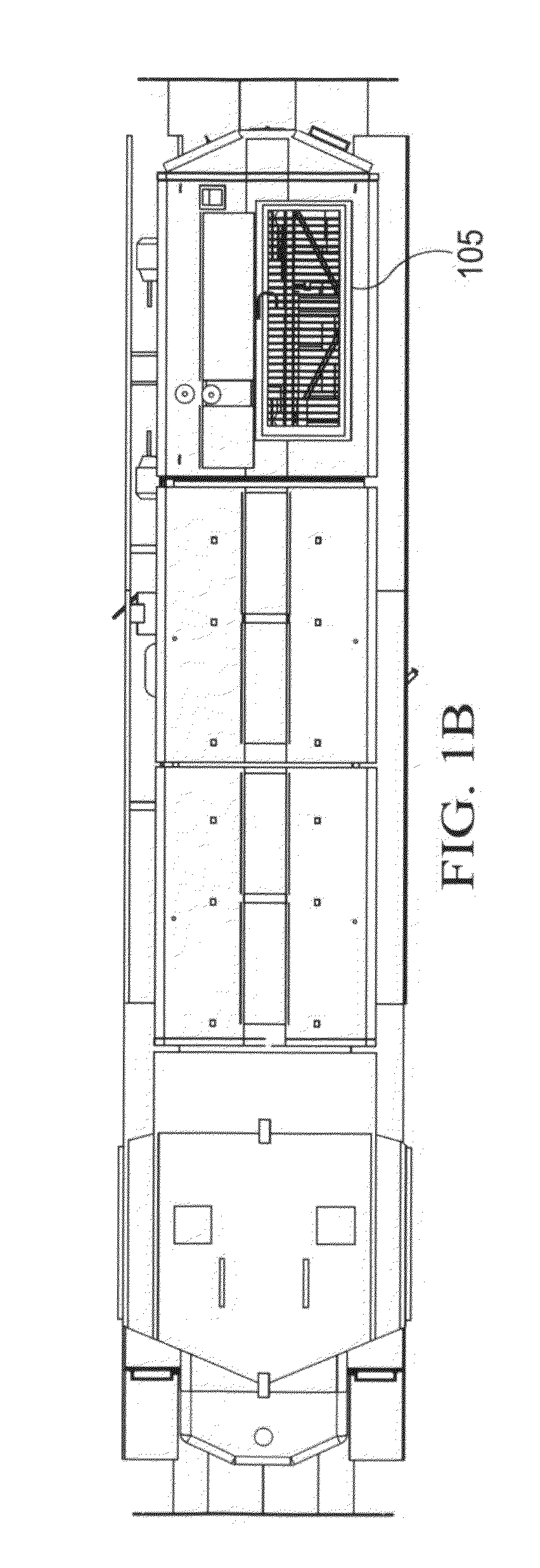Power management systems for hydrogen hybrid locomotives and hydrogen hybrid locomotives using the same
a hydrogen fuel cell and hybrid technology, applied in locomotives, electrochemical generators, locomotives, etc., can solve the problems of increasing the cost of fossil fuels, the impact of trains on the environment, and the rail industry is facing numerous challenges, so as to reduce the amount of greenhouse gases expelled, reduce the dependence of the railroad on imported oil, and reduce the effect of particulate air pollution
- Summary
- Abstract
- Description
- Claims
- Application Information
AI Technical Summary
Benefits of technology
Problems solved by technology
Method used
Image
Examples
Embodiment Construction
[0033]The principles of the present invention and their advantages are best understood by referring to the illustrated embodiment depicted in FIGS. 1-17 of the drawings, in which like numbers designate like parts.
[0034]FIGS. 1A-1D are respectively left-side, top, front, and rear views of a hydrogen fuel cell hybrid (“hydrogen hybrid”) switching locomotive 100 embodying the principles of the present invention. It should be recognized that while the principles of the present invention are being described with respect to a switching locomotive embodiment, these principles are applicable to the design and construction of line-haul locomotives, as well.
[0035]The various components and subsystems of hydrogen hybrid locomotive 100 will be discussed in detail below. Generally, hydrogen hybrid locomotive 100 includes a cab section 101 containing the control systems used by the operator, a center section 102 containing the batteries and the hydrogen storage tanks, a rear housing section 103 c...
PUM
 Login to View More
Login to View More Abstract
Description
Claims
Application Information
 Login to View More
Login to View More - R&D
- Intellectual Property
- Life Sciences
- Materials
- Tech Scout
- Unparalleled Data Quality
- Higher Quality Content
- 60% Fewer Hallucinations
Browse by: Latest US Patents, China's latest patents, Technical Efficacy Thesaurus, Application Domain, Technology Topic, Popular Technical Reports.
© 2025 PatSnap. All rights reserved.Legal|Privacy policy|Modern Slavery Act Transparency Statement|Sitemap|About US| Contact US: help@patsnap.com



